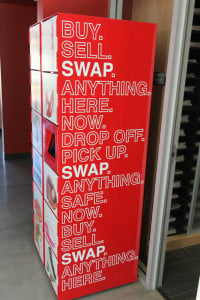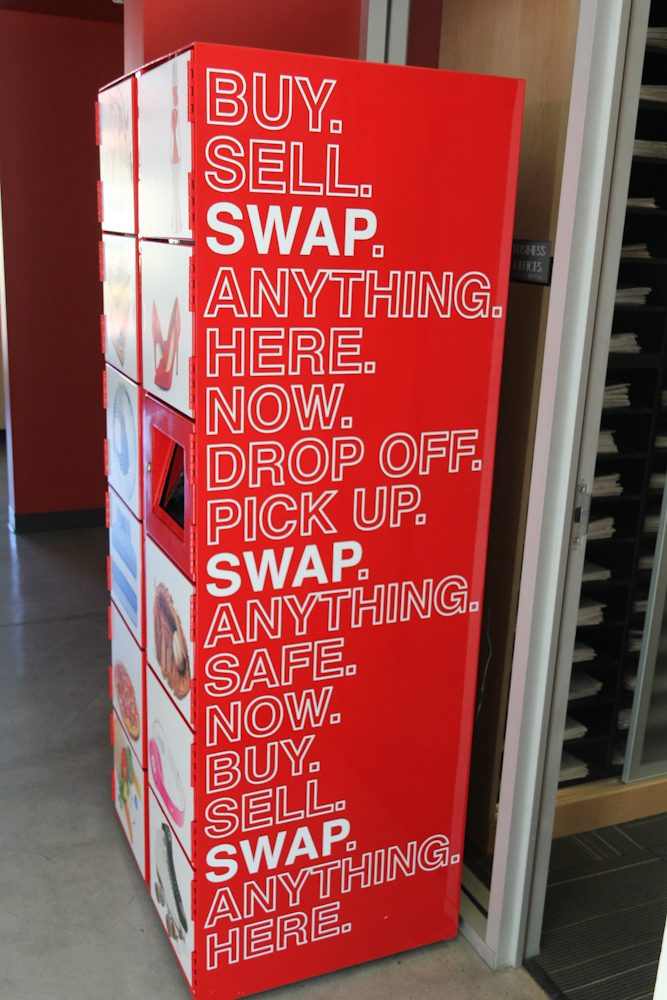
Swapbox, a startup co-founded by Neel Murthy ’10 to help students buy and sell everything from textbooks to concert tickets, installed its first on-campus kiosk this Tuesday at The Stanford Daily’s office.
Students can use the Swapbox website or iOS app to browse for things to buy or upload pictures and information about items they want to sell. The purchase amount is transferred from the buyer’s credit card to the seller’s bank account, and both parties are given a PIN code to type into the kiosk when dropping off or picking up the item.
Murthy came up with the idea behind Swapbox after noticing the many items stored in his dorm room for which he no longer had use.
“I was here for six years — I paid a lot of tuition and I bought a lot of books,” Murthy said. “The disconnect in my mind was that I had all this stuff that I knew other people needed, but I couldn’t get [it] to another student.”
Murthy’s childhood friend and Swapbox co-founder Nitin Shantharam helped him further develop the idea into a business plan, and Jay Borenstein ’93 M.S. ’94, lecturer in computer science, joined the Swapbox team as an advisor in late 2011 after Murthy enrolled in his CS 210 class.
“I like to support all of my students and [Neel] was one of my favorites,” Borenstein said about his role as an adviser. “I thought it was an interesting and ambitious idea, and I wanted to support it.”
Murthy set up a “human Swapbox” this September to test the program and gauge interest. Students dropped off and picked up items from the Swapbox team at Tresidder, with more than 60 transactions made during the pilot week.
Alanna Reyes ’14 used the pilot Swapbox to sell her Physics 41 textbook. Reyes said she chose Swapbox because she found it more convenient to use than a platform like eBay or trying to sell the textbook through a mailing list.
“I really liked the interface and how it was directly on my phone already, whereas I felt like if I used or a website or tried to email something around it would get lost in the shuffle of emails,” Reyes said, adding that she appreciated the fact that Swapbox directly deposited the purchase amount into her bank amount.
While Reyes expects Swapbox to become popular on campus, she acknowledged that the startup has to overcome several significant hurdles.
“I guess the major challenge it faces right now, besides the fact that it is kind of unknown, is general competition and the fact that you could easily complete a transaction without it,” Reyes said, noting that many students use email lists or Facebook groups to buy and sell items.
Kush Nijhawan ’16, who used Swapbox to purchase a Math 51 textbook, said he also had a positive experience with the service. However, Nijhawan predicted that the localized nature of Swapbox might be limiting.
“If they wanted to improve something, they could try to see if they could make it more flexible so that it is not just localized,” Nijhawan said. “If that’s not profitable enough, they need to find a way to make it more effective not just to local people to give it more flexibility.”
While Borenstein asserted that Swapbox has the potential to expand beyond college campuses, Murthy said he is currently focused on collecting results from the 250 Stanford students who have signed up to use the service.
“The whole point was to help other Stanford students,” he said. “The big push is going to be to make sure this works on Stanford and make sure people like it, and if that all works, we can expand to other universities.”
